https://www.youtube.com/watch?v=VlTJMQ8plbs
2-Look PLL Tutorial _ Beginner CFOP Speedcubing
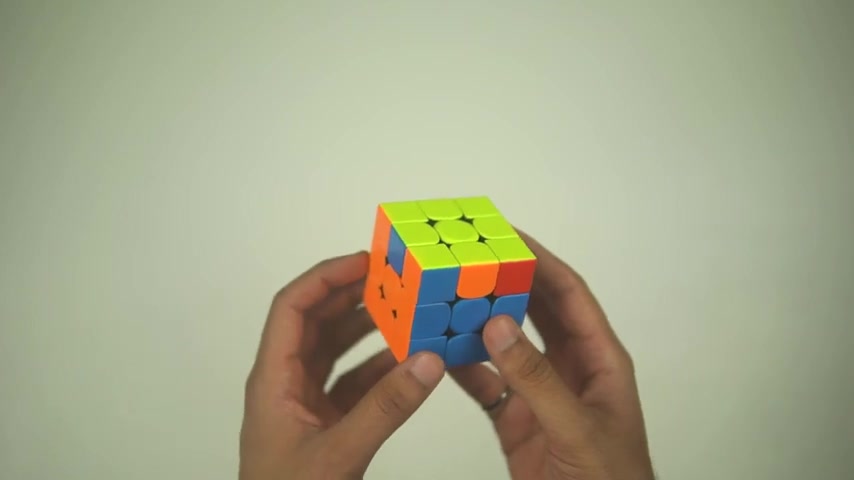
PLL is the last step of CF and it stands for permuting the last layer , which really just means we're solving whatever is remaining on the cube at this moment .
After solving Oll , full PLL has 21 different algorithms .
But in this video , we're gonna be learning to look PLL which essentially breaks it down into two steps .
First , we're gonna learn how to solve the PLL corners and that there are two different cases for that .
And then we learn how to solve the edges for which there are four cases for a total of six different algorithms .
We need to learn .
The good news is that these six algorithms contribute directly to full PLL .
The first case we're going to learn is how to do an adjacent corner swap .
So if you look around your cube and you see two adjacent corner pieces with the same color , those are called headlights .
And if you have one pair of headlights on the cube , and that means you need to do an adjacent corner swap with these two corners .
So this has to go here and this corner needs to come here .
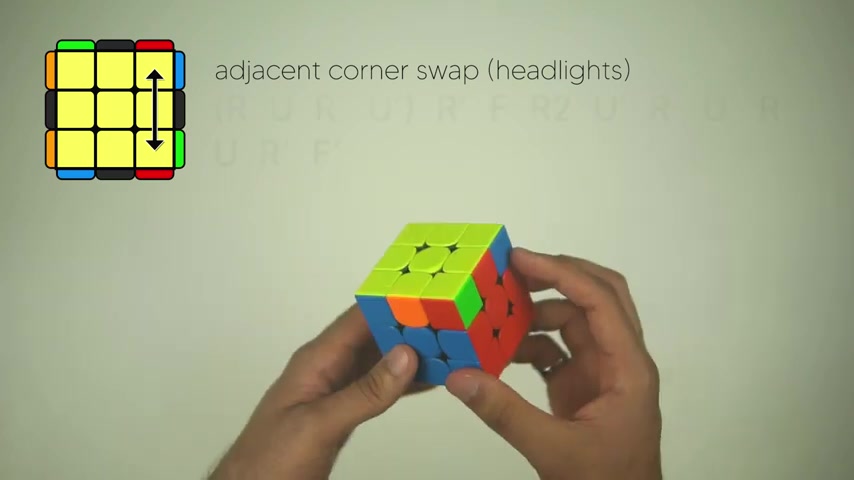
So hold your headlights on the left side like this .
And we're going to perform this algorithm .
And the best way to memorize this is to really just keep track of what happens to this F two L pair .
So we're gonna take this off to our pair out and bring it to the front like this .
Then we're going to do an R prime and an F to bring up this other F two L pair do an R two to bring this edge piece to the front and connect the F two L pair .
Put it down for a second so that we can do a U prime on the top layer , take the F two L pair back out and put it back where it came from and then do an F prime to return everything .
And there it is , we have all four corners solved .
Next , we need to learn how to do a diagonal corner swap .
In this case , you'll notice you have no headlights around the cube at all .
And that's when you need to swap this corner with this one .
And this corner needs to come to the front , right ?
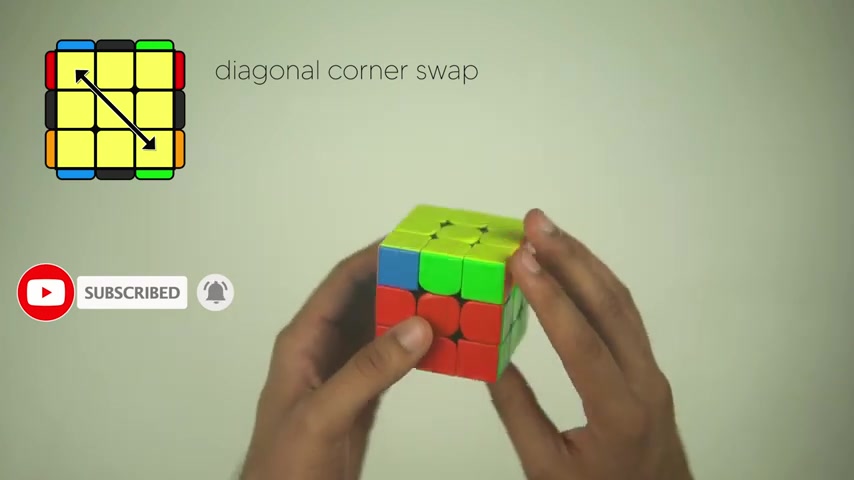
So it's gonna be a diagonal swap and the algorithm goes like this .
It's very similar to the last one , but a little bit different .
So F our U prime our prime to take this F two L pair out and put it back in , we're gonna do a U prime then take this F two L pair back out .
And return everything back to normal .
So it's like the second half of the first algorithm .
And you'll notice you get this toll case , then you just have to do the algorithm to solve this particular OLL case which goes like this are , you are prime to take this F two L pair out and bring it to the front .
Then you just have to insert it back in here in a slightly different way like this , do an F and then we just have to bring this edge back , bring the F two L pair back .
And there it is now onto the edges .
We're gonna learn how to do a three edge counterclockwise cycle .
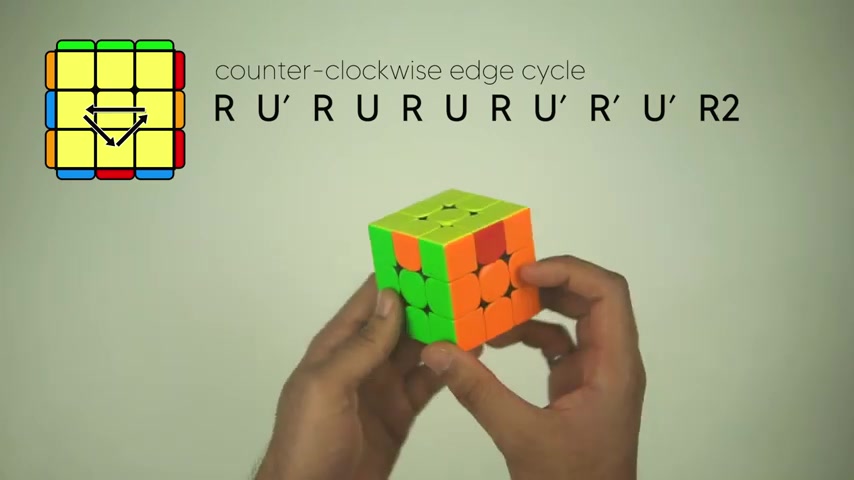
So you'll notice this edge piece needs to come here .
This one goes here and this red one should go all the way to the other side and then the back is solved .
So holding it like this , we're gonna start this algorithm with an RU prime , then do an ru and are you again , then see this , see this corner , who we bring an ru prime U prime or R prime ?
Sorry to bring this and create this line , then just do a U prime to bring the line over and hard to , to put everything back in .
And there it is next up , we have a clockwise three way edge cycle .
So this blue one comes to the front and this goes here and then you have your solved edge at the back .
The algorithm for this is just the counterclockwise algorithm reversed .
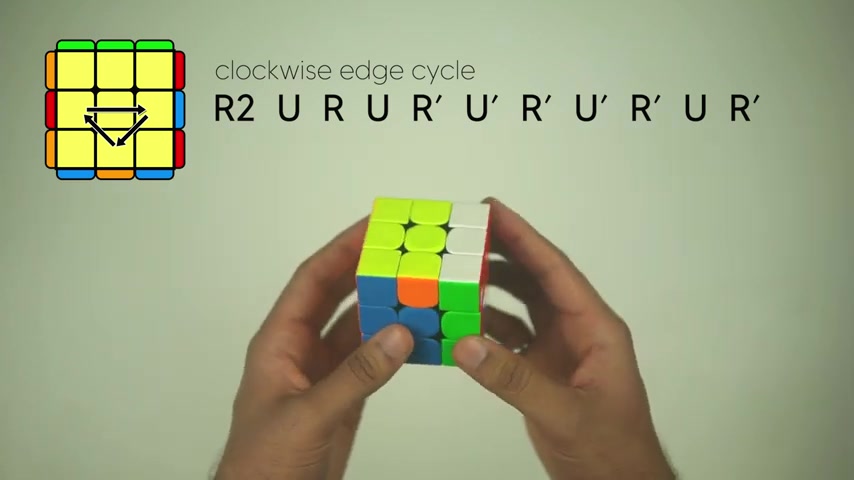
So we're gonna start by moving this white line to the front with an R two and bring it over here to the front , then do an Ru R prime U prime and then R prime U prime again .
And now you'll notice there's this corner here , we're gonna bring it up to connect this F two L pair .
Then have to insert this F two L and there it is moving on to another case for the edges you might run into .
So here the edges have to be swapped across from each other .
It's really easy to recognize because you'll always notice this blue green and this red orange next to each other .
And uh the algorithm for this is going to be M two U prime M two U two M two U prime M two .
It's a really fun one and you can also actually do it the other way .
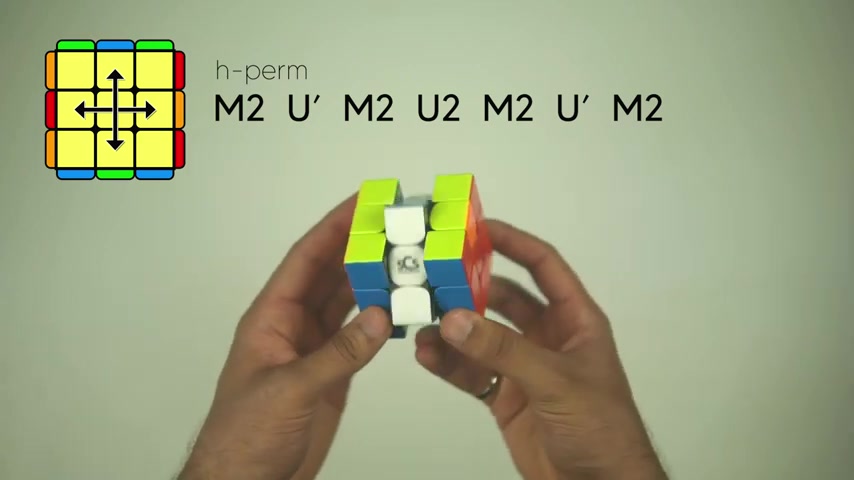
So you do M 22 U two M 22 .
I prefer to do it with the U prime just because I find it easier to do the M moves with my right hand .
And uh the way I actually do the finger trick is using my ring finger here like this and then followed by my middle finger pushing it down like that and it just becomes one smooth motion .
Finally , here is the last edge case that we need to learn that you might run into here .
You know , you'll notice that the edges have to be swapped adjacent to each other .
So these two have to be swapped and these two , so you're gonna hold it like this where the ones that need to be swapped are on the front and on the left , then do a U , then am prime U prime M two U prime M two U prime M prime .
And then we try to solve the middle layer with a U two and do an M two to put everything back .
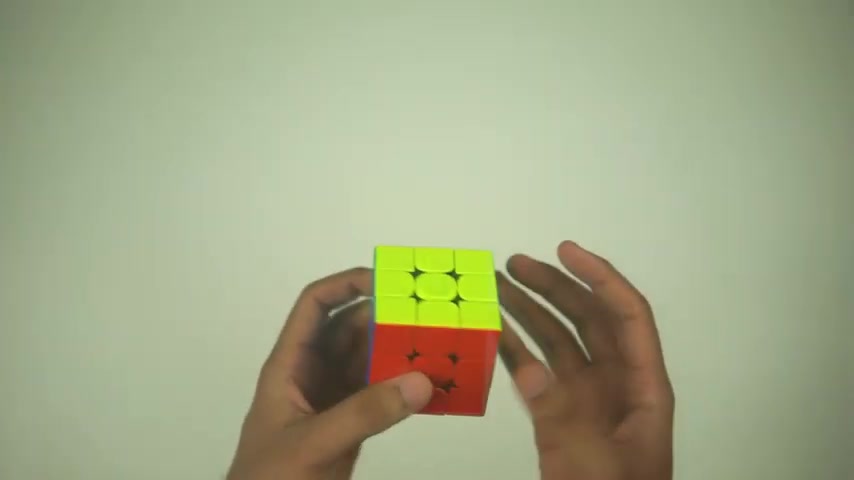
And there it is , it's a bit of a tricky one .
You just got to practice it to get the hang of it .
So that's all there is to learning to look PLL you just have to learn how to solve the corners first and then the edges second .
And uh this will significantly speed up your times compared to beginners method .
And once you solve this , I would highly recommend learning full PLL have a video to that link in the description or you can click on the video at the end of this one .
If you're wondering where I get my cubes , I get them from a cube shop dot com and you can use code paradox for a discount .
If you found this video helpful , make sure to leave a thumbs up and subscribe if you haven't already .
Thanks for watching guys and I'll see you in the next one .
Are you looking for a way to reach a wider audience and get more views on your videos?
Our innovative video to text transcribing service can help you do just that.
We provide accurate transcriptions of your videos along with visual content that will help you attract new viewers and keep them engaged. Plus, our data analytics and ad campaign tools can help you monetize your content and maximize your revenue.
Let's partner up and take your video content to the next level!
Contact us today to learn more.